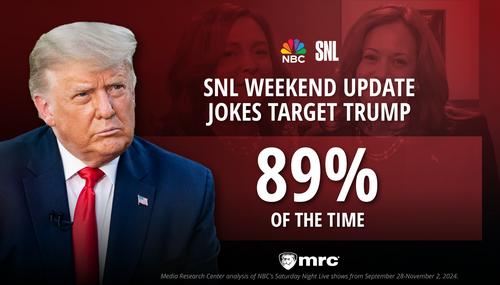The liberal media were wringing their hands in anguish about the loss of “abortion rights” as they reported the Supreme Court's 5-4 decision Wednesday upholding a ban on partial-birth abortions.
Network reporters described the ruling in sensational language. NBC's Chip Reid said it was a “stunning defeat for supporters of abortion rights.” CBS's Wyatt Andrews said “The ruling is huge because the ban is now the first abortion restriction ever approved with no exception for the health of the mother.” ABC's Jan Crawford Greenburg said the decision represented a “seismic shift,” and described pro-abortion activists as “devastated.”
On the April 18 evening broadcasts, the news networks framed the story as an attack on abortion rights, rather than a defense of innocent life. As the
The print press didn't hide its pro-abortion bias either. Stories in the April 19 editions of The New York Times, The
While The Washington Post, Los Angeles Times and Chicago Tribune provided details explaining what the partial-birth abortion procedure involves–delivering a baby from the mother feet-first until only the head remains in the birth canal, piercing the skull, suctioning out the brain, then crushing the skull–The New York Times preferred to euphemize the truth with abstract, technical language. “The banned procedure, known medically as 'intact dilation and extraction,' involves removing the fetus in an intact condition rather than dismembering it in the uterus.” The Times said the procedure was given the “provocative label 'partial-birth abortion'” by the “anti-abortion movement” to turn “the public focus of the abortion debate from the rights of women to the fate of fetuses.”
Each of these four leading print outlets emphasized the dissent by Justice Ruth Bader Ginsberg, who called the decision “alarming.” The New York Times reported that Ginsberg read portions of her opinion “at a slow pace that caused every syllable to resonate.” The Washington Post described Ginsberg's statement as “solemn” and read aloud to a “stone silent courtroom.” The Los Angeles Times prominently noted that Ginsberg is the “court's only woman.”
ABC, The New York Times, The
Every network story and all four major daily print publications ended their reporting on the Supreme Court decision with worrisome language about the future of abortion rights. The Los Angeles Times neatly illustrated the mainstream media's liberal lean on the issue by ending its story with a quote from Nancy Keenan, president of NARAL Pro-Choice America, who said “… elections matter. An anti-choice Congress and anti-choice President pushed this ban all the way to the Supreme Court.”
The coverage of this ruling leaves absolutely no doubt on which side of the abortion debate the liberal media come down.
Kristen Fyfe is senior writer at the Culture and Media Institute, a division of the





